ON AN ORDINARY SUMMER DAY
The 1st of July 2021 was a pretty ordinary summer day.
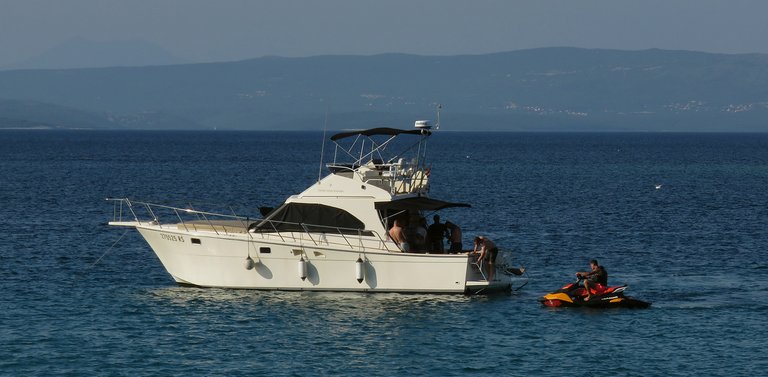
Speedboats and personal watercrafts were speeding dangerously close to the beach.
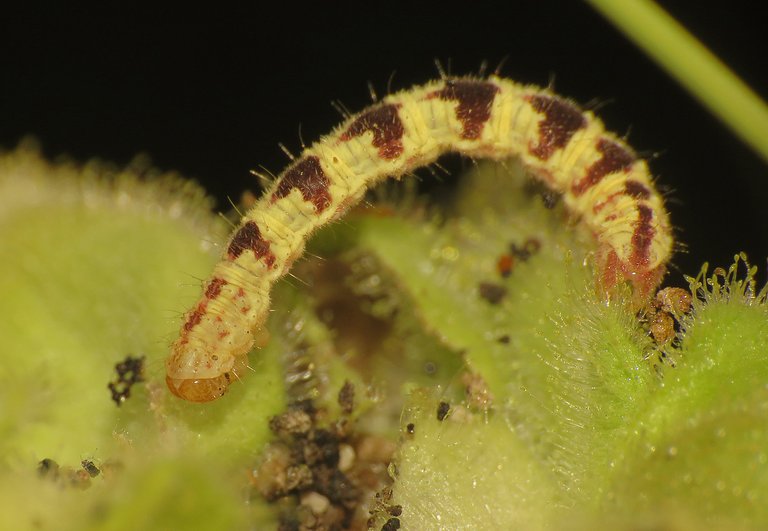
Insects and their larvae were feeding, hiding, and wandering through the herbaceous vegetation of the coastal meadow.
And me, I was following the action through my camera. Although the start of the post looks a bit like a tourist board advert, with a view of the sea and some cliche summer holiday stuff ...
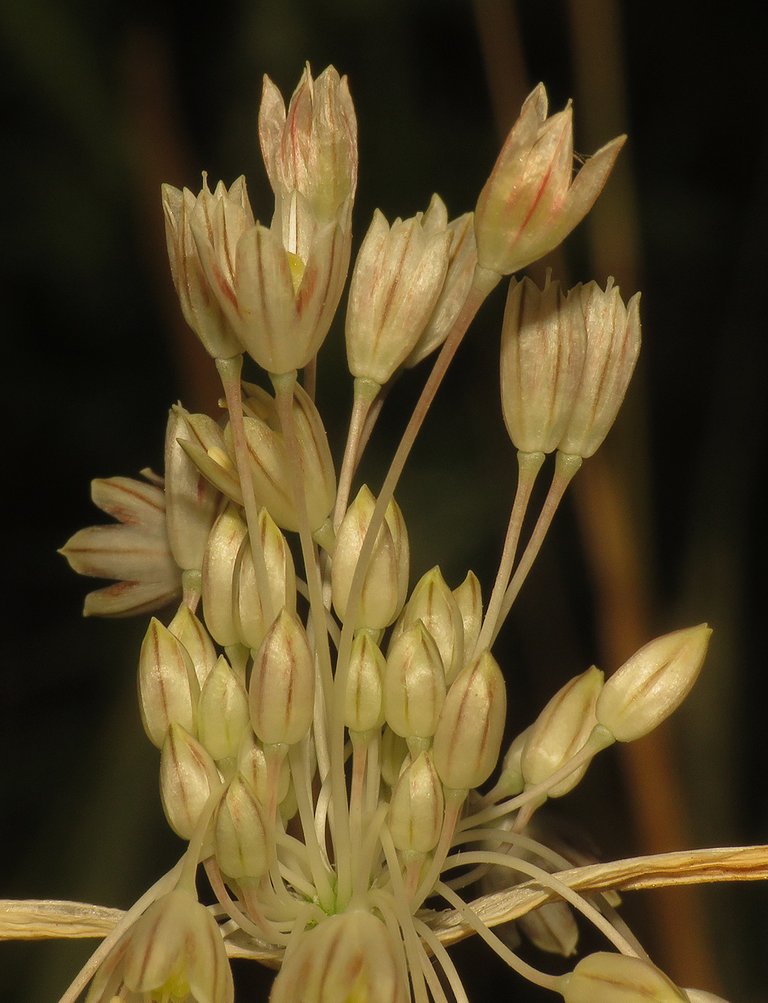
... what follows ...
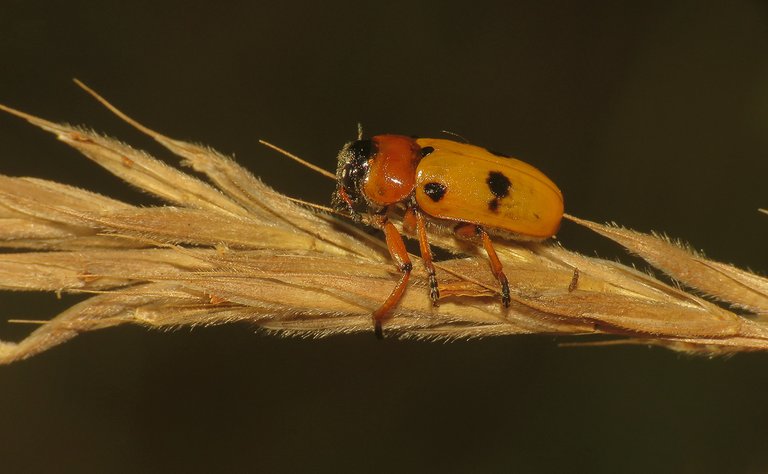
... it's more about flora and fauna in my seaside area.
You can see the Coptocephala scopolina leaf beetle in these photographs.
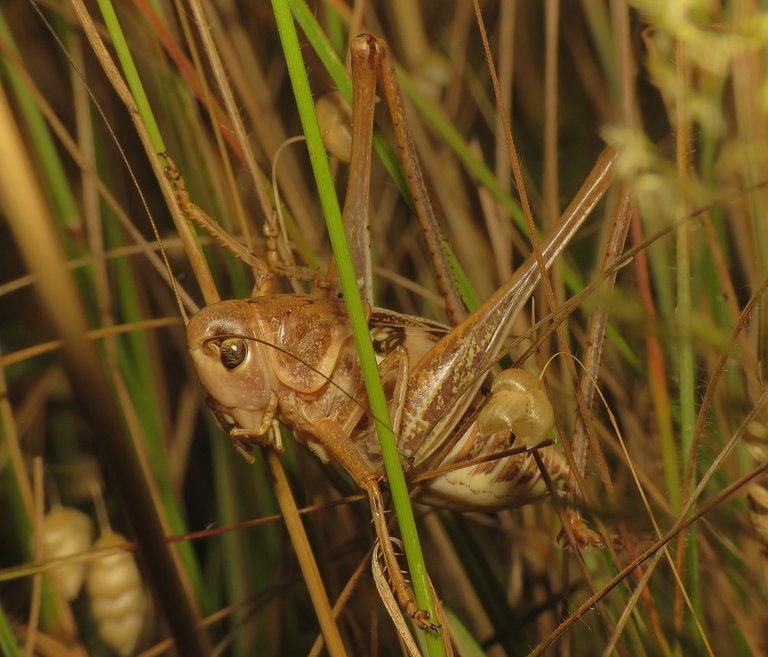
Here you can take an up-close look at the mostly dried out grass ...
... and the pretty big but barely visible insect in it.
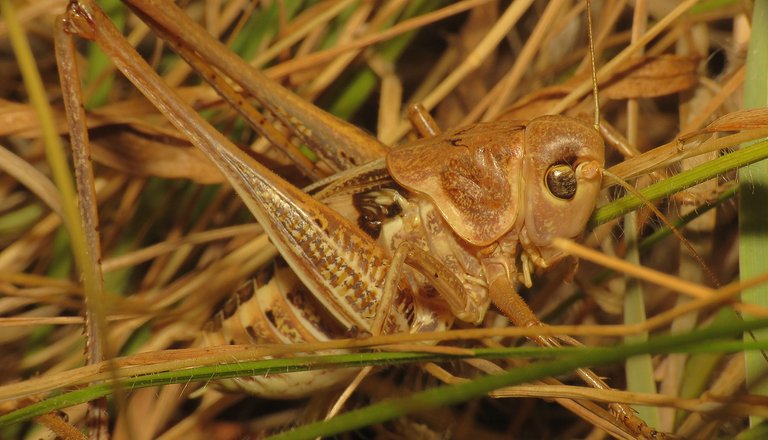
This is the nymph, a young, not completely developed version of the Decticus albifrons bushcricket.
When it comes to this small caterpillar ...
... I can't tell you the exact species ...
... but I'm pretty sure that this is a larva of some moth from the Geometridae family.
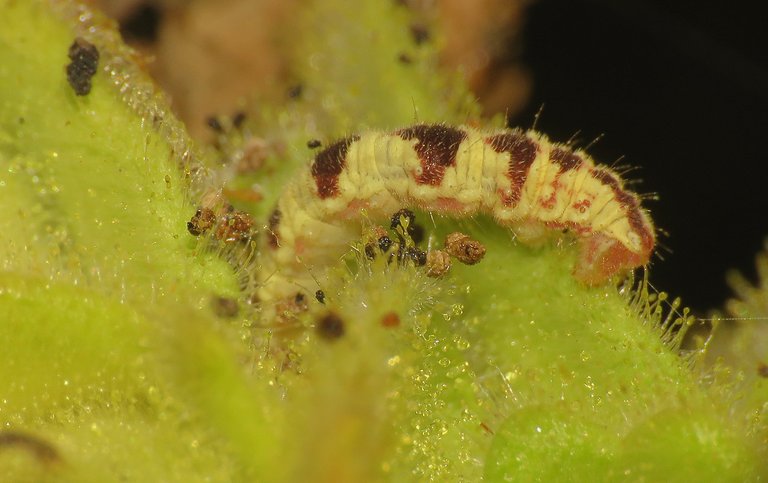
The caterpillar was feeding on the juicy, unripe fruits ...
... of the Bellardia trixago plant.
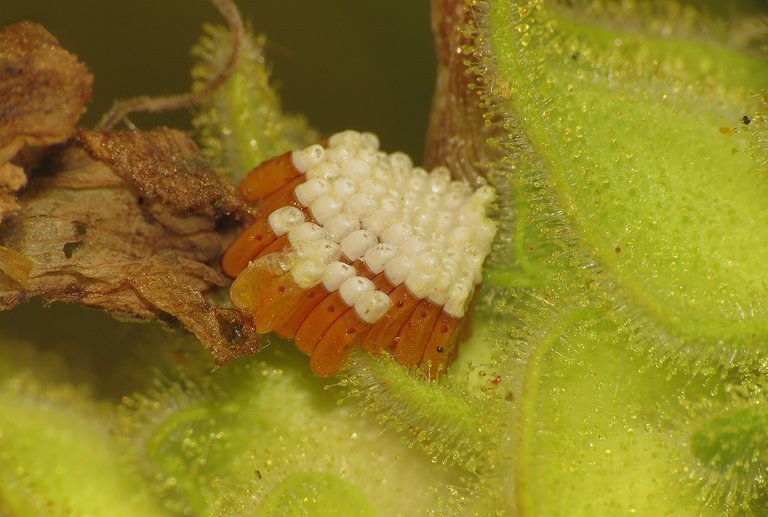
I found another interesting detail on the same plant ...
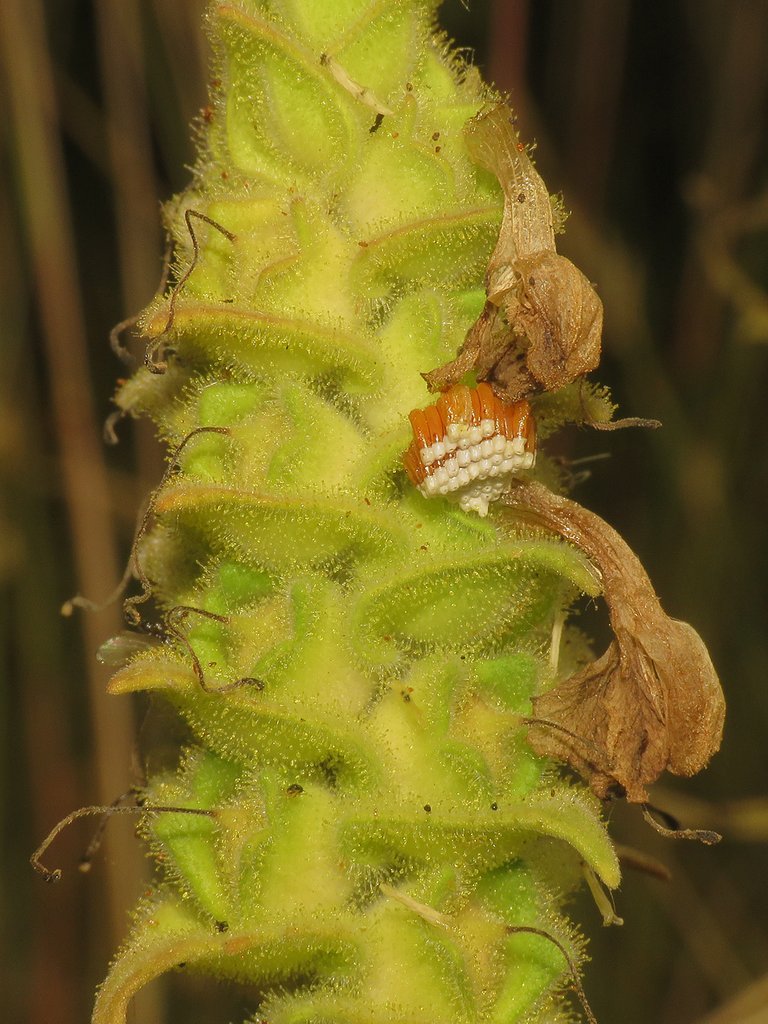
... right under the dried-out flower ready to fall from the recently formed fruit.
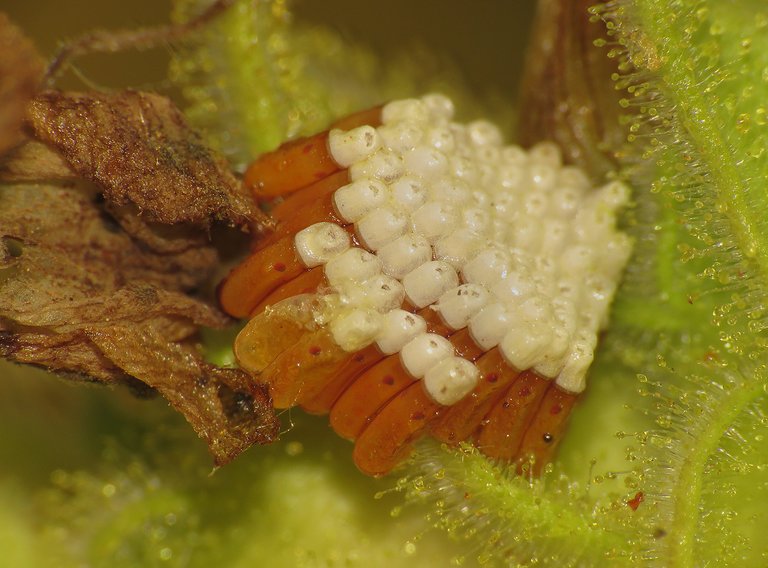
It looks like a cluster of eggs. Or some similar thing produced by an insect. But I don't know what is this exactly.
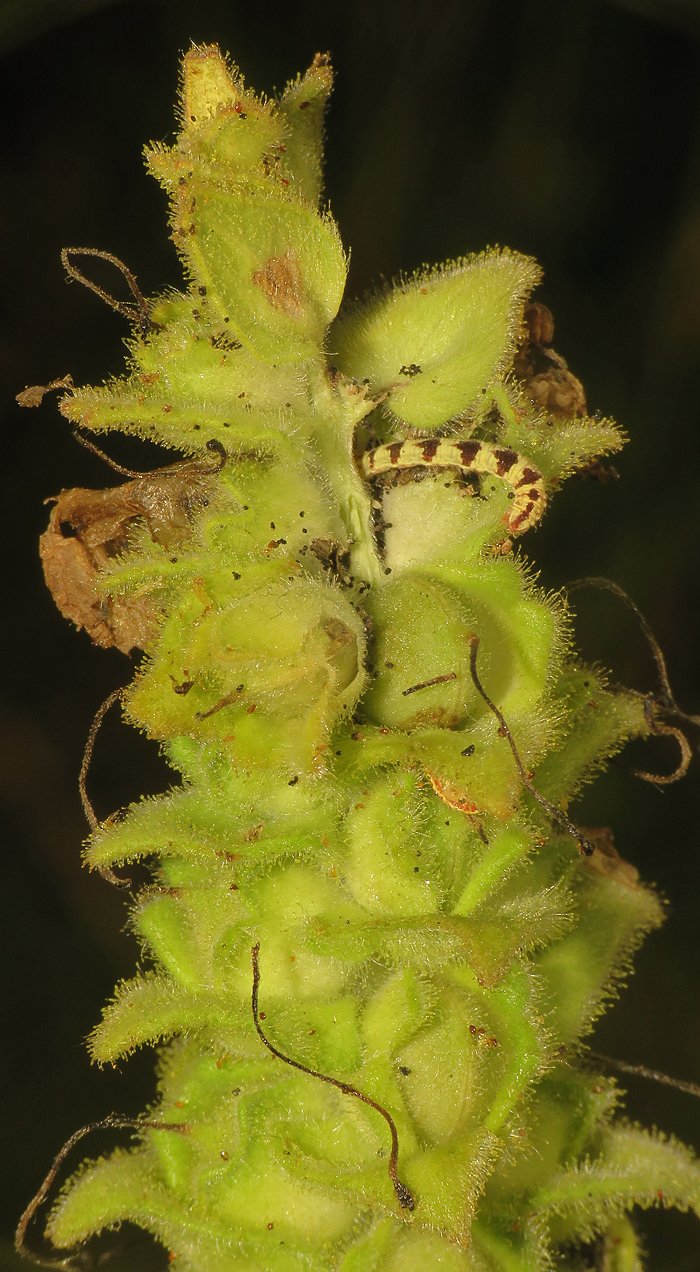
This parasitic plant grows attached to the roots of other plants. It's green and photosynthetic so isn't completely dependent on the host plant, but growing on the dry coastal meadow is much easier if you can extract water and nutrients from the roots of others.
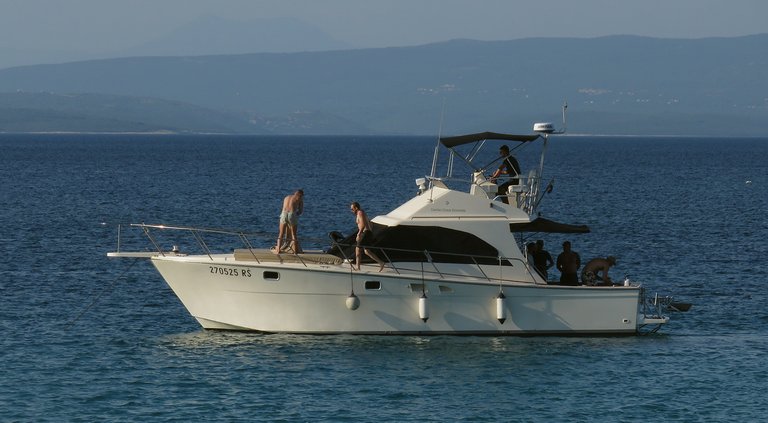
Meanwhile, on the sea not far from there ...
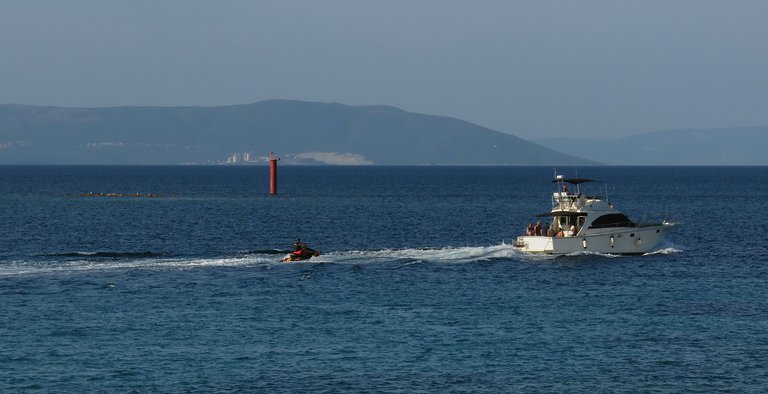
... the speedboat bunch was leaving the inlet.
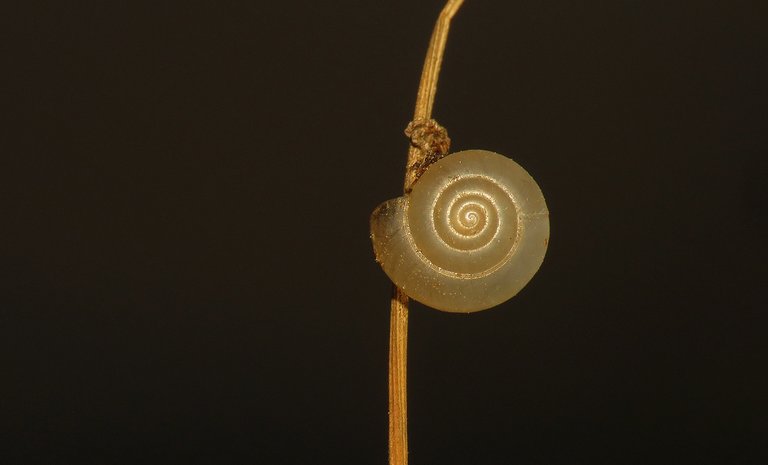
Here you can see the empty shell of a minuscule snail, attached to the stem of some desiccated plant.
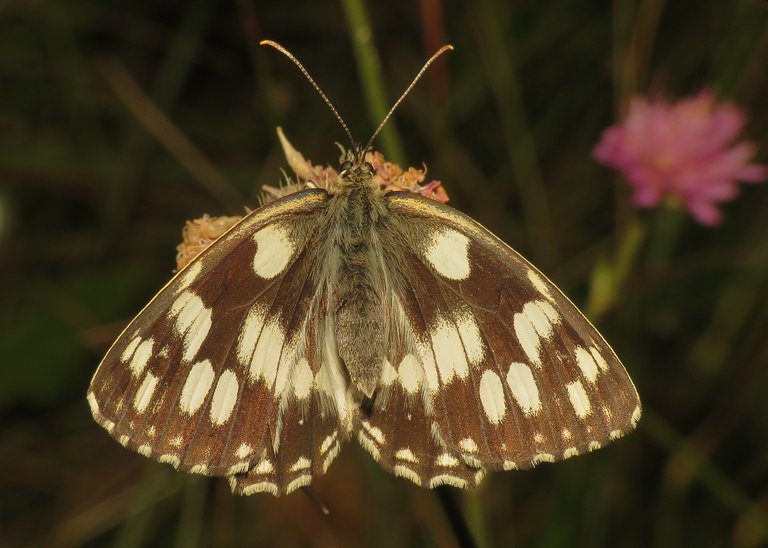
This is the Melanargia galathea butterfly, a species commonly known as Marbled white.
Here you can take a look at another well-camouflaged insect ...
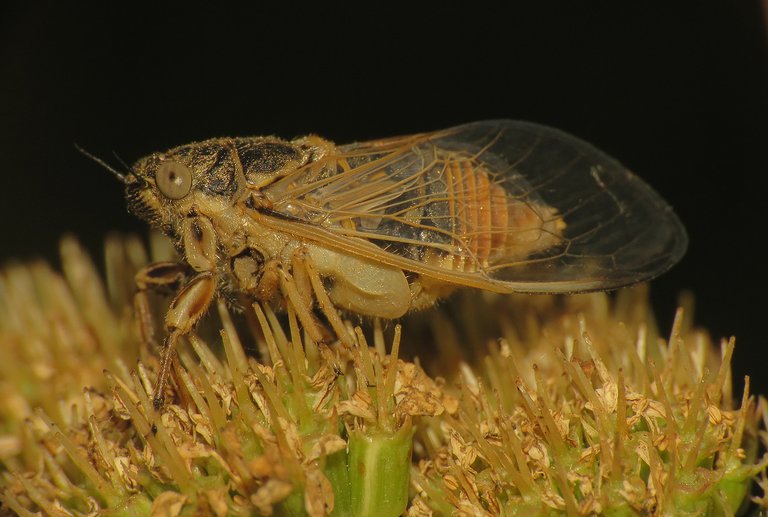
... some small cicada. I don't know the name of the species, but I can tell you that this is the smallest cicada in this area. Unlike their bigger relatives that can be heard singing from the trees, this one sings and hides low in the grass, where is hard to notice even if you follow its song.
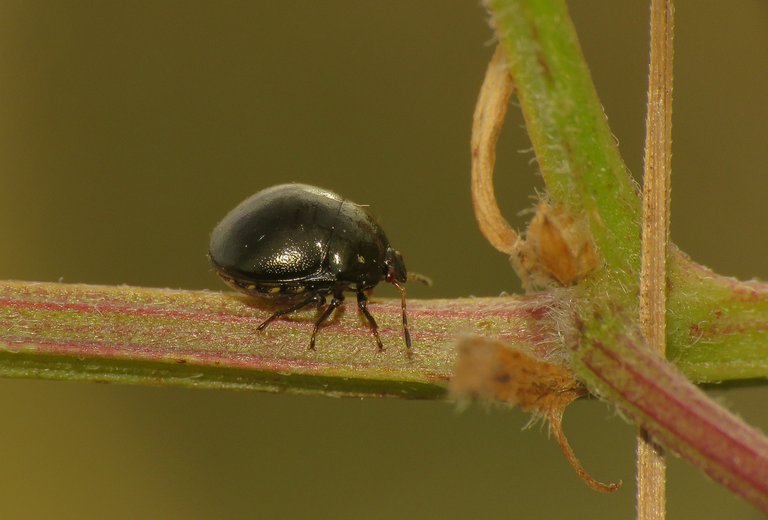
The lovely, rounded little thing that looks a bit like something out of the cartoon or picture book for children ...
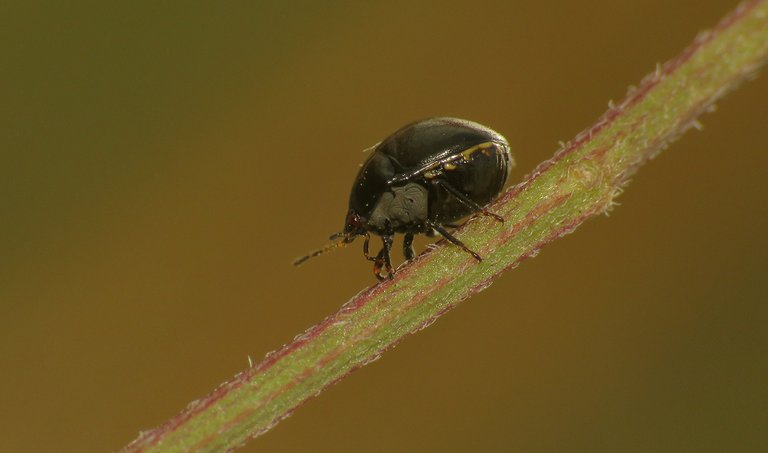
... is the Coptosoma scutellatum shield bug that feeds and reproduces on a wide range of plants from the Fabaceae family.
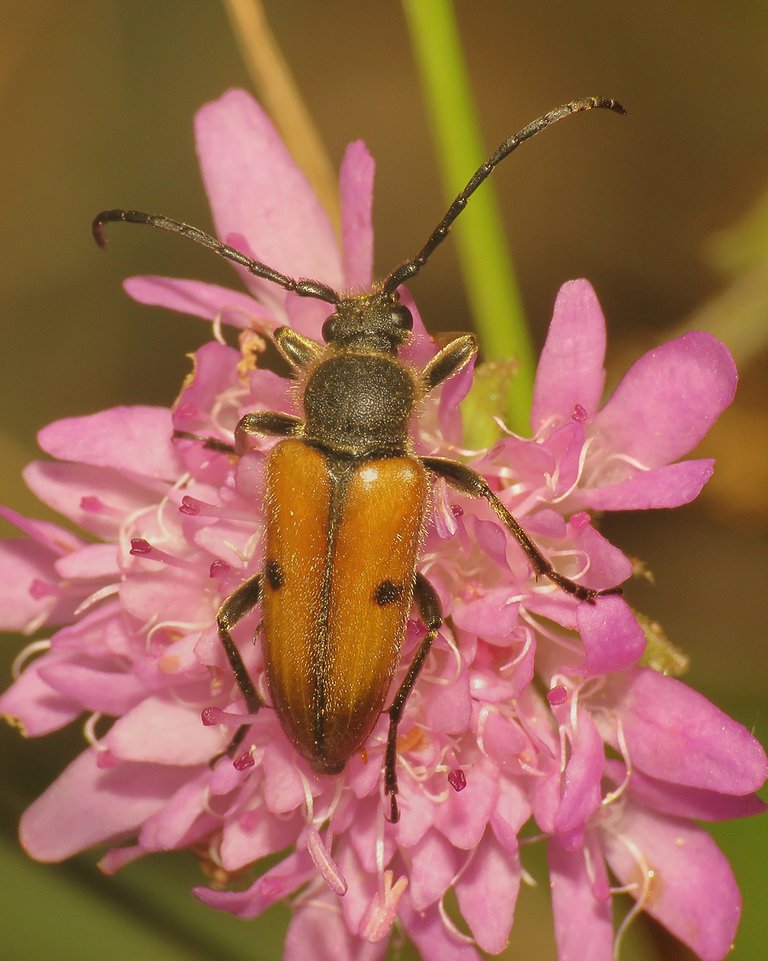
This is a longhorn beetle, Cerambycidae family. With many similar-looking long-horned beetles around, I wasn't able to find out the exact species. The beetle in this photograph is enjoying the nectar of the Knautia arvensis flower.
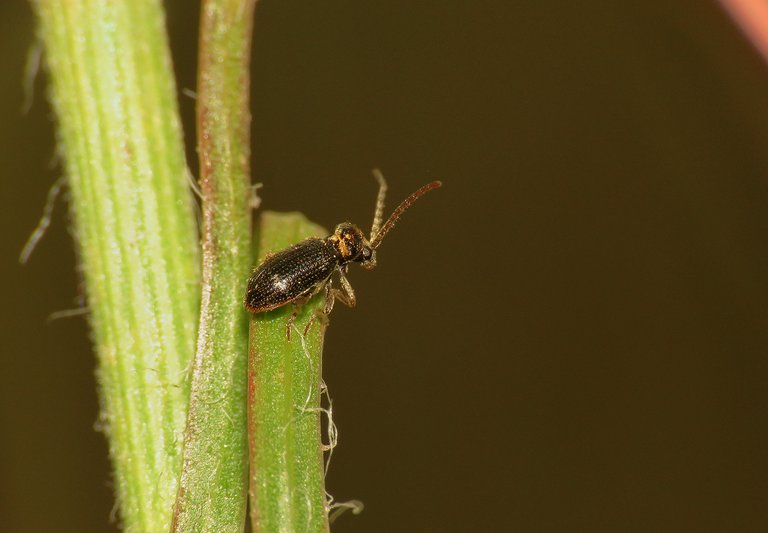
Here you can see some minuscule beetle ...
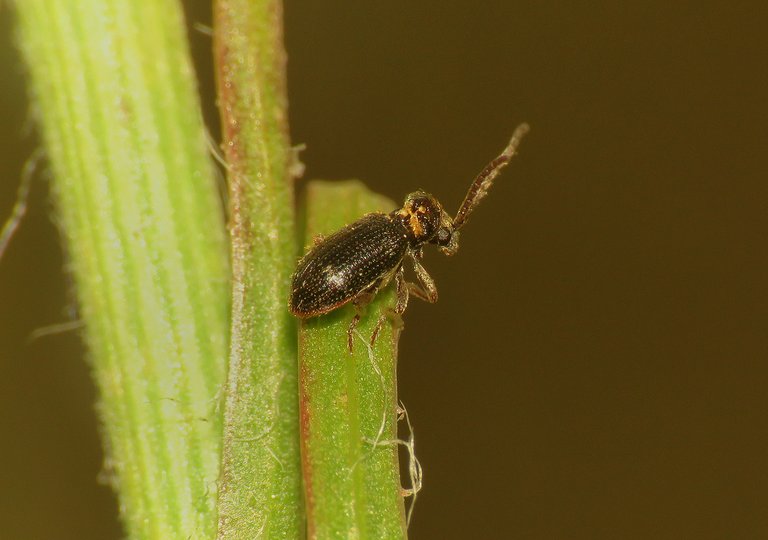
... that I never noticed before. That's all I can tell you about this species.
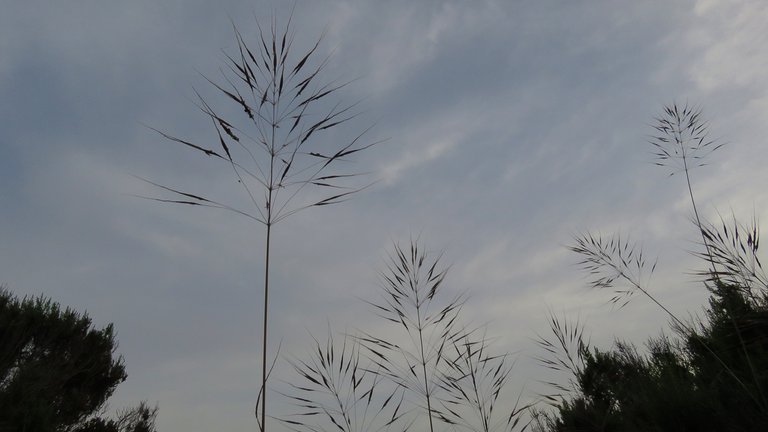
As the evening was approaching ...

... the light was changing ...
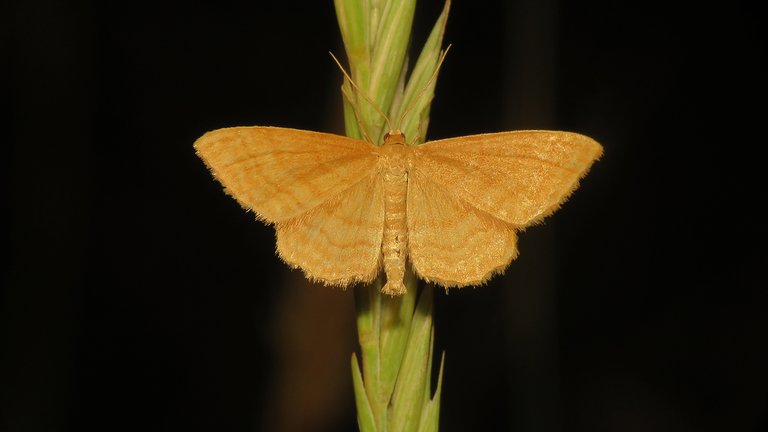
... and various moths started flying around.
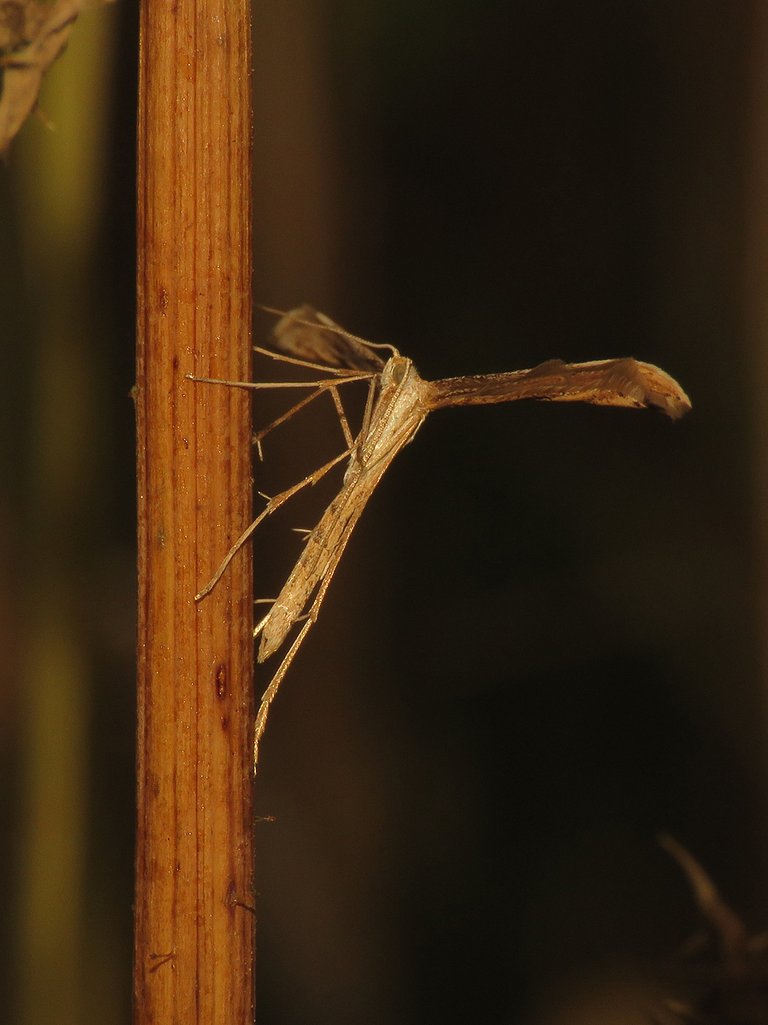
This weird-looking moth ...
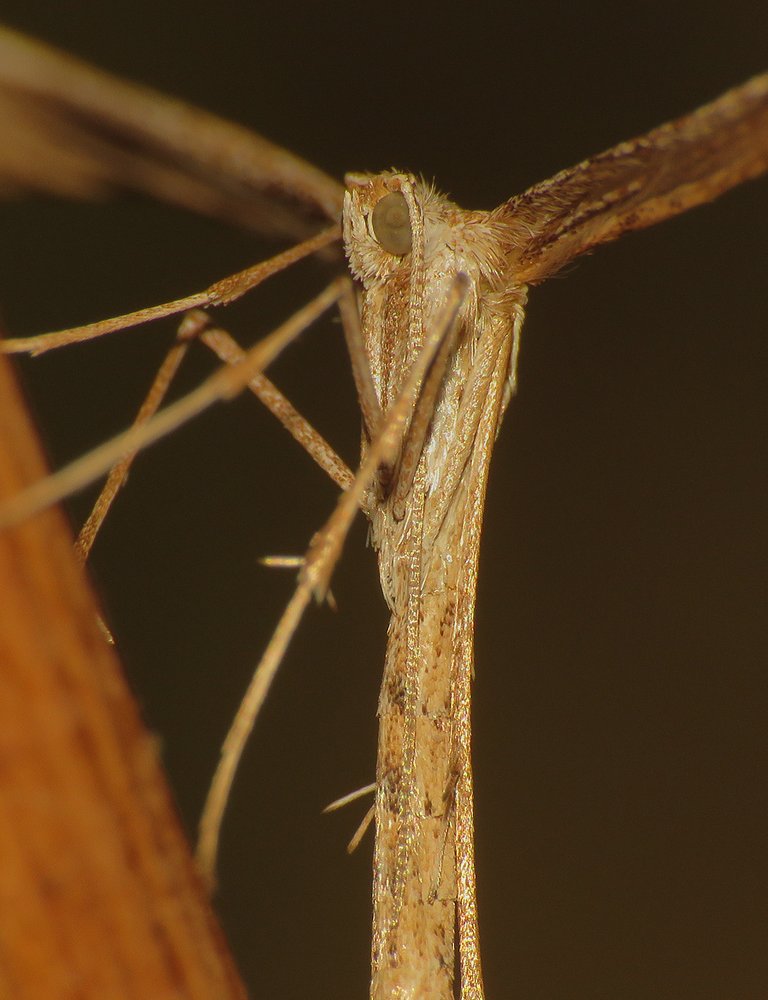
... is the Emmelina monodactyla, a species from the Pterophoridae family.
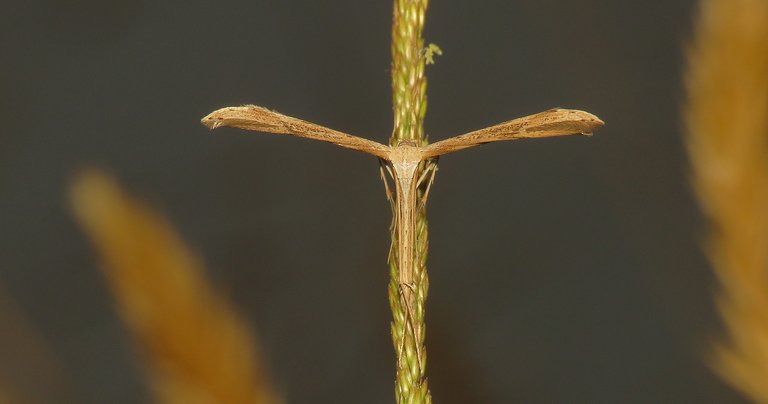
These moths are very well camouflaged and hard to notice among the stems and leaves of grass.
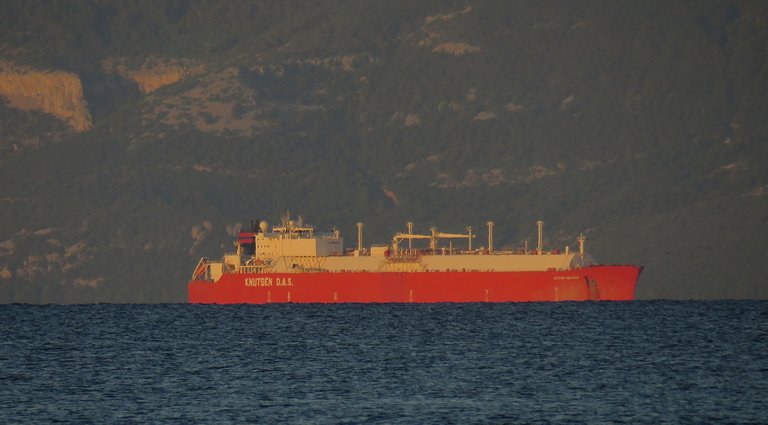
In this photograph, the focus moved from the small creatures in the grass around me to the big, distant stuff on the sea.
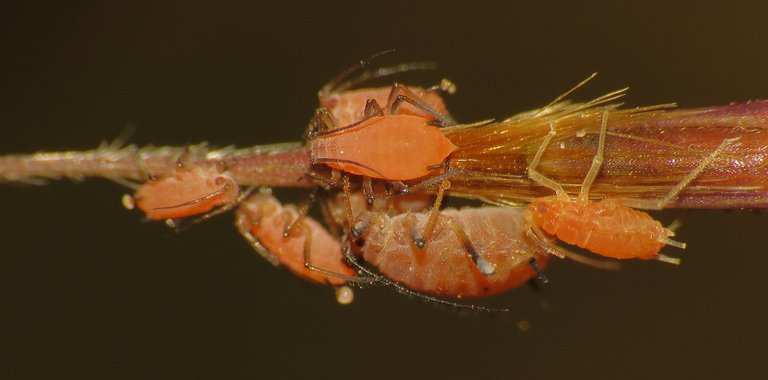
This group of colorful aphids ...
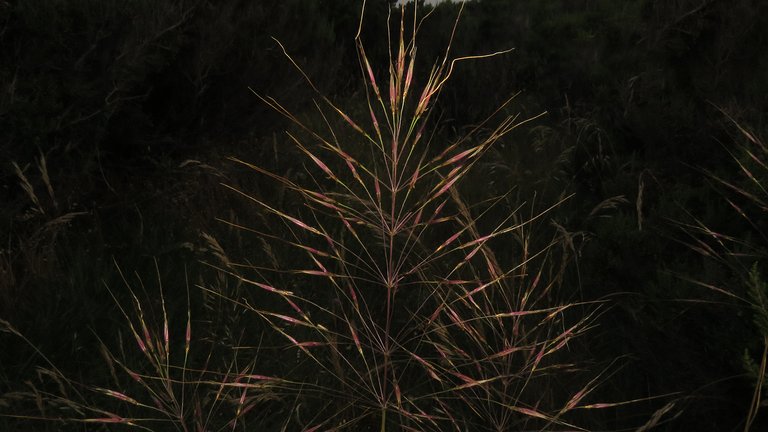
... was photographed on the beautiful Chrysopogon gryllus grass.
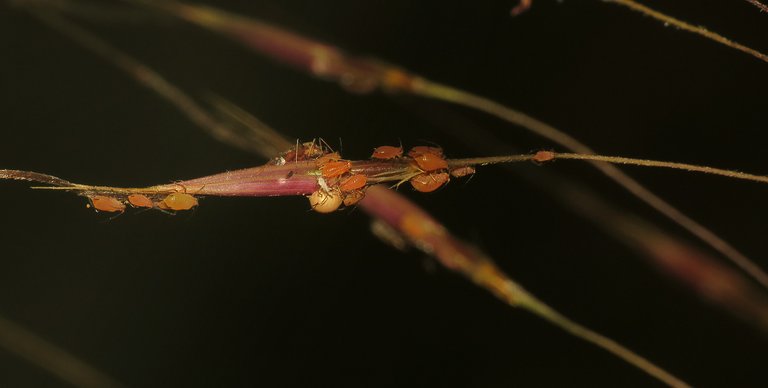
I can't tell you the name of the species. I often see green aphids on these meadows, but earlier in the year, when the grass is still green. Never noticed these orange ones before.
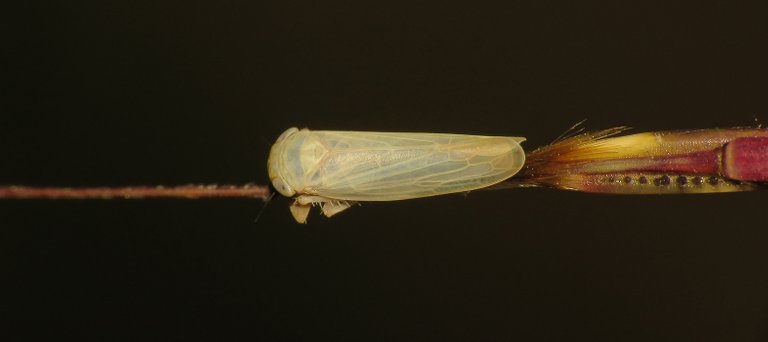
I found this small leafhopper on the same plant.
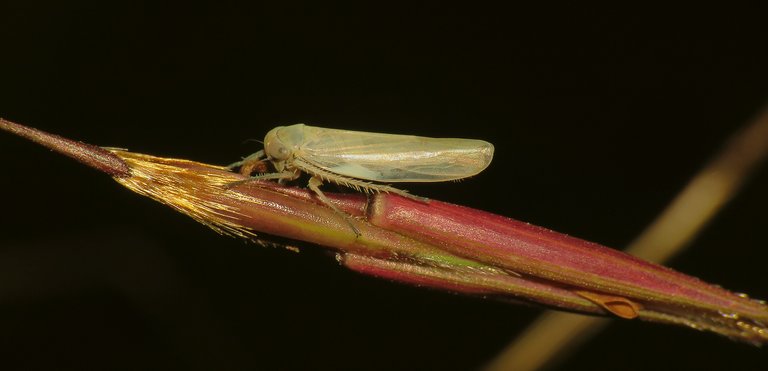
I don't know the exact species but the family is surely Cicadellidae.
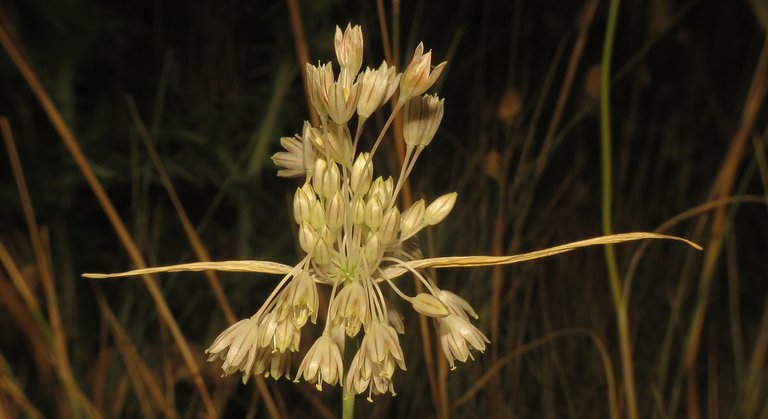
A couple of minutes later, not far from there ...
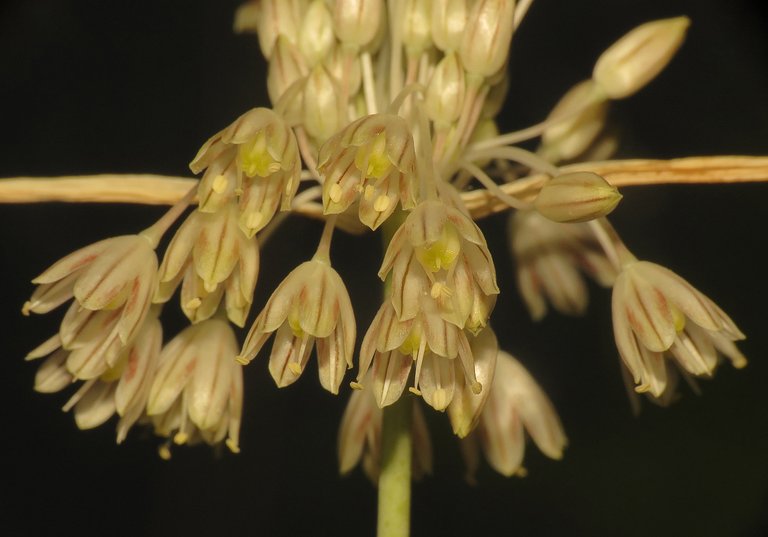
... I photographed these small flowers of the Allium longispathum plant, and then ...
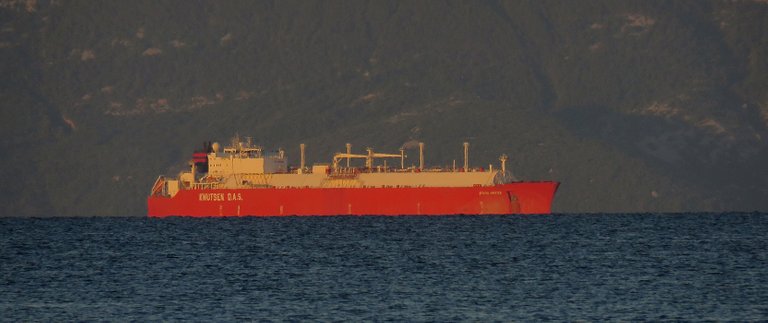
... as the big cargo ship was slowly moving along the horizon ...
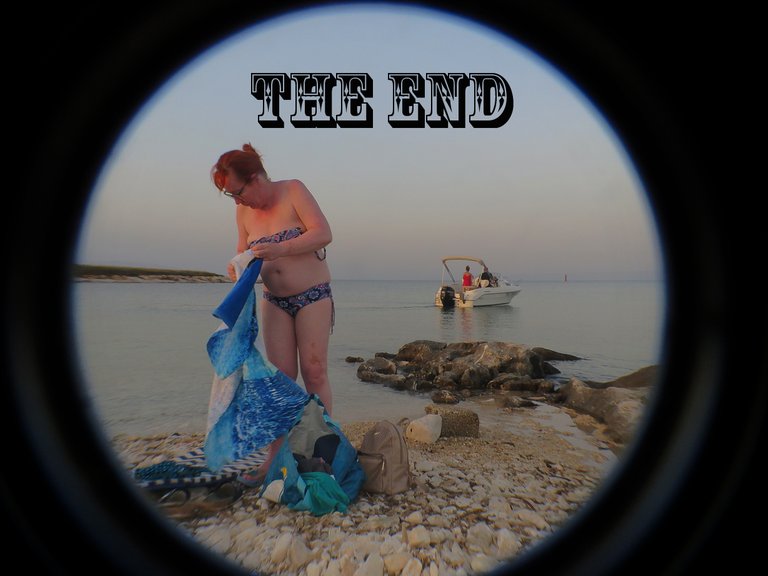
... and the last tourists were leaving the beach, I walked to my car and drove home.
AS ALWAYS IN THESE POSTS ON HIVE, THE PHOTOGRAPHS ARE MY WORK - THE END.
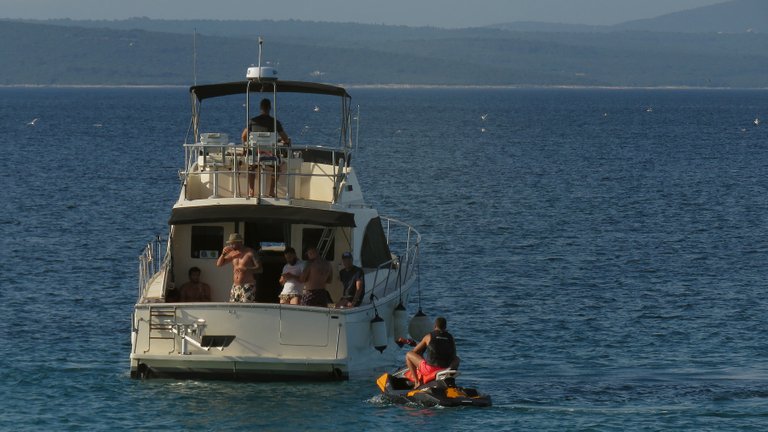
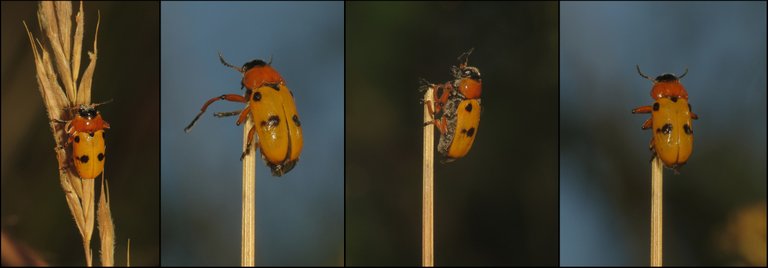
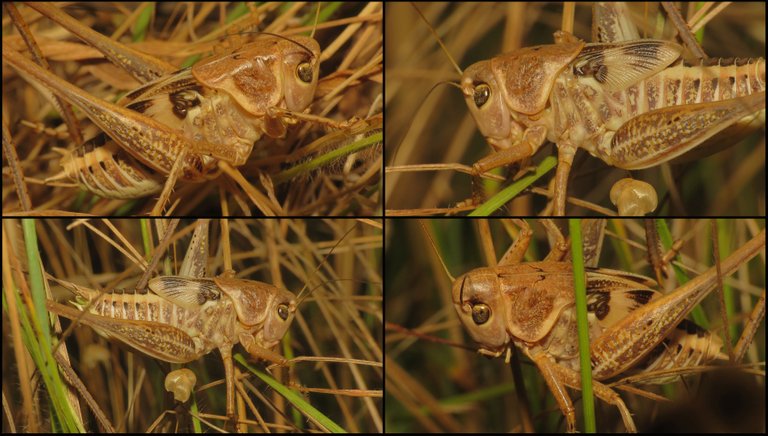
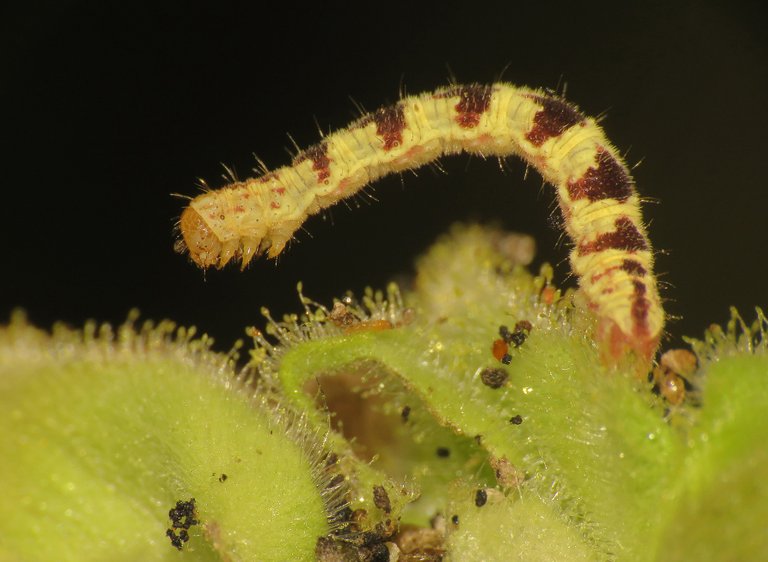

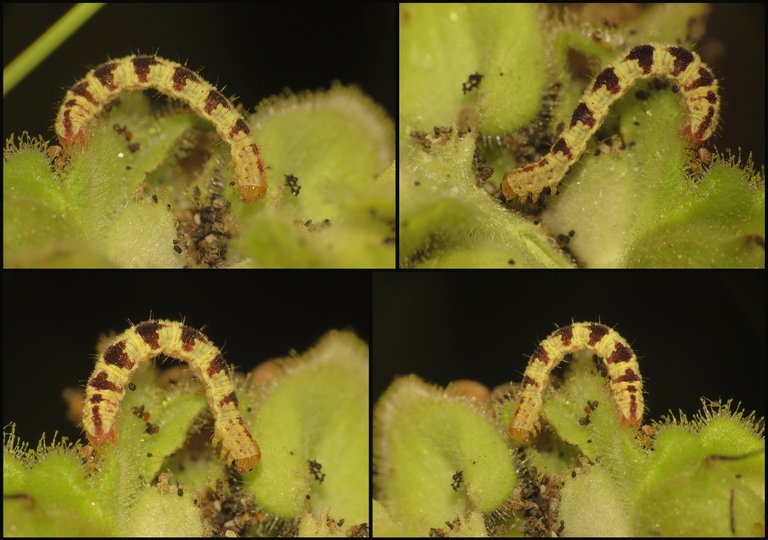
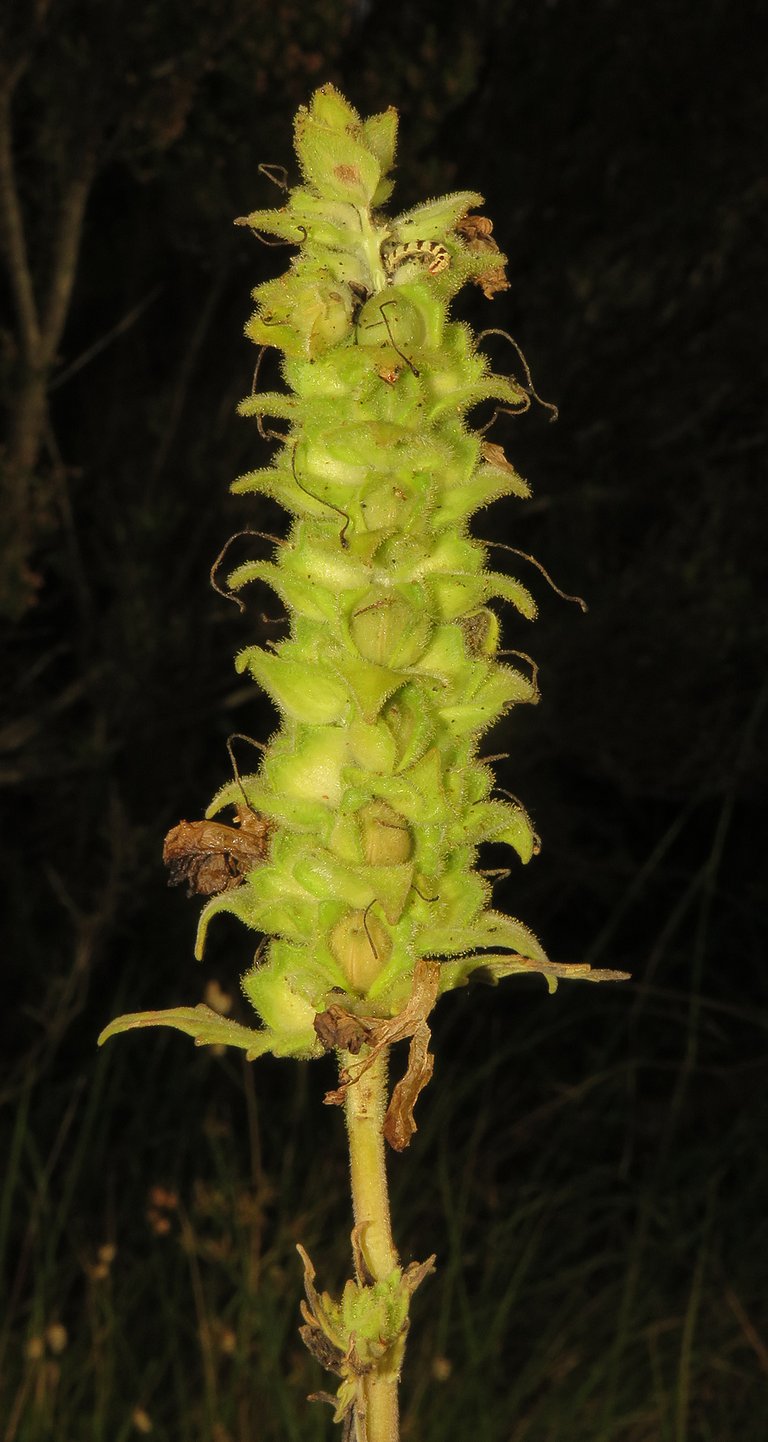
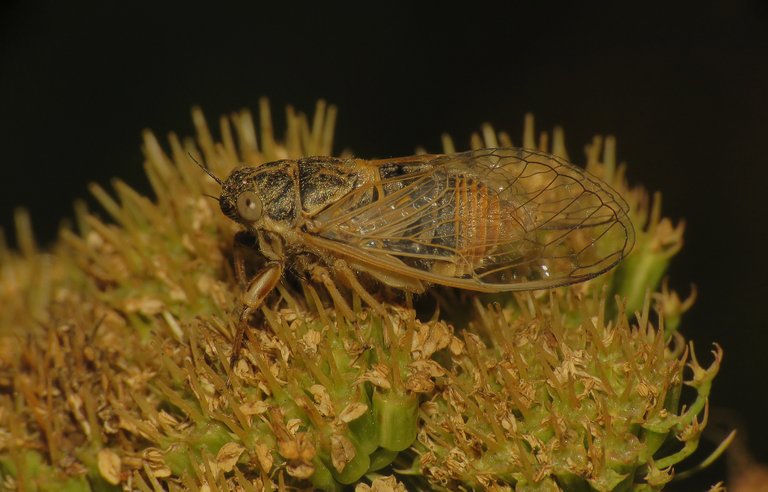
Heeey friend @borjan this time I'm more interested in the speed boat picture, I really enjoy it, the scenery is so beautiful,
Photographs of insects, wonderful landscapes and cityscapes is your specialty, especially when it concerns with insects, I guess that since there are so many and also when they hide it must be a problem, but I see you are passionate about that, it's great!
wow it's really interesting all your posts friends, thank you for sharing this for us @borjan
Thanks for your contribution to the STEMsocial community. Feel free to join us on discord to get to know the rest of us!
Please consider delegating to the @stemsocial account (85% of the curation rewards are returned).
You may also include @stemsocial as a beneficiary of the rewards of this post to get a stronger support.
Thank you :)
Those egg cases were pretty cool! The Emmelina monodactyla moth was certainly weird looking. I'd never have guessed it was a moth.
Hello friend Borjas, varied photos sea, boat, insects all great.
The insects my favourite photos, with you I learned how beautiful they are. Wonderful photos, your lens captures every detail of their anatomy!
Congratulations and success
Beautiful insects macro images! It's great to see Summer time photos at this time of the year, too.
The perfect view between the ship and the water, like the view in the magazines I've seen.
And also some other photos are very high quality.
I hope you have a nice day @borjan 🥰🥰